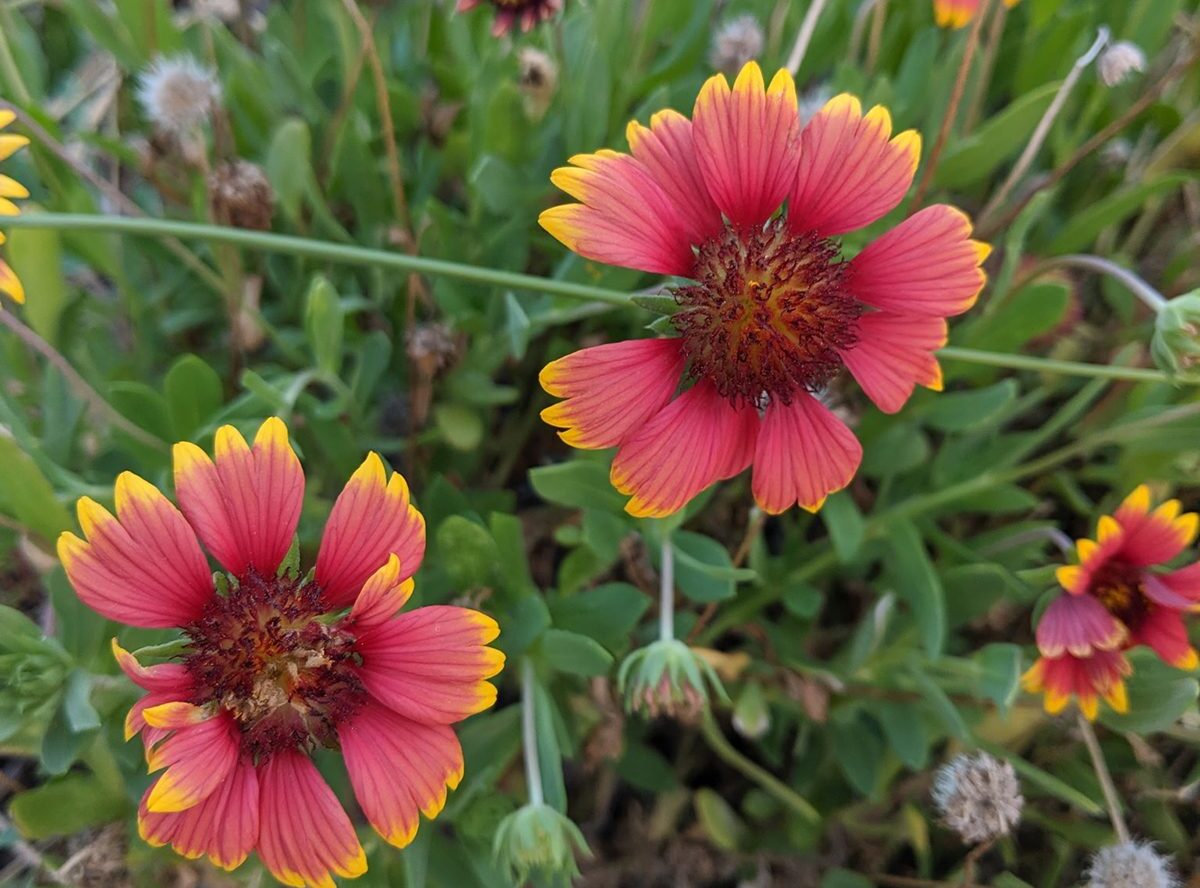The Garden Club of Minneapolis has a long history in Minnesota, beginning during the early years of World War II as a way for men who did not see combat to create community and personal gardens.
Becky DeLaCruz (she/her), chair of marketing and promotions, described the progression from the exclusive Men’s Garden Club of Minneapolis to the Garden Club of Minneapolis, a gender-neutral and inclusive place for those who love gardening, along with the club’s history, various programs, and legacy. While the club has a membership fee, there are many ways to get involved with the club through their events and various ways that they help communities.
History and recent name change
The club began as the Men’s Garden Club of Minneapolis in October of 1942 as a charter of the Men’s Garden Clubs of America, now named Gardeners of America. At that time, it was a refuge for men who were refused by local garden clubs that women wanted to keep reserved for women.
Membership began by invitation only and consisted of 20 wealthy men, who were mostly doctors and lawyers. Some early members included popular names in horticulture circles including Leon Snyder, Jerry “Mr. Rose” Olson, and members of the Bachman family of Bachman’s Garden Center. Snyder played a role in establishing the Minnesota Landscape Arboretum in 1958 and, to date, all Arboretum directors have been and still are members of the club. Olson pioneered the “Minnesota Tip” method of protecting roses in the cold Minnesota weather.
As women began joining the club in 1989 and, after many years of trying, the club changed its name to the Men’s and Women’s Garden Club of Minneapolis in 2012. This year, they changed their name to the Garden Club of Minneapolis to be gender-neutral and more accurately reflect who they are, according to DeLaCruz. Although many members are from the Twin Cities and beyond, they kept the Minneapolis portion to stay identifiable as they transition into the new name.
“If our tagline is ‘a garden club for everyone’, then let’s have our name reflect this and be more welcoming as it should be,” she said.
Meetings, fundraisers, and tours
While other clubs in the Twin Cities may focus on a specific plant, the Garden Club encompasses all topics within horticulture.
The Garden Club meets eight months out of the year on the second Tuesday of the month from 6 p.m. to 8 p.m. The remaining four months are for the various events they put on for their members and the community.
On the second Tuesday of May, the club hosts their main fundraiser, their plant sale. What started in 1946 as a members-only event in a parking lot has grown exponentially since opening up to the public in 2013 and is now hosted at St. Mary’s Greek Orthodox Church.
DeLaCruz said people get excited as soon as they begin advertising. People begin making their lists and lining up outside before the doors open.
“It’s like Black Friday at Walmart,” she said. “There are people waiting to bust down the doors.”
She said the plant sale sources several plants and vegetables from various growers for people to buy at affordable prices, including plants you won’t be able to find at your run-of-the-mill garden centers. DeLaCruz said the former chair of the sale would grow plants from seed in two temporary greenhouses in his backyard to sell at the sale. She said the plant sale may not be as robust since he retired, but it will remain a successful sale for community members to attend. The sale also has Hennepin County Master Gardeners present to help people pot plants or answer any gardening questions they may have.
Alongside their plant sale, the Garden Club hosts garden tours in July, which are open to the public on odd years. They have a normal garden tour along with a progressive garden tour the DeLaCruz said is similar to a potluck. They tour two of the members’ gardens that are near each other and enjoy wine and hors d’oeuvres at the first one and coffee and dessert at the second. Although you won’t be able to catch one this year, mark your calendars for next year’s public garden tours; they truly are not your ordinary garden.

Legacy of the Garden Club
The club has been present in Lyndale Park for many years. Club members planted 200 crab apple trees in 1952 for their tenth anniversary and three of those trees are alive today.
Today, they have three gardens that they care for at Lyndale Park: The Mixed Border Garden, Native Garden, and Shade Garden. DeLaCruz said there are three committees within the club, each in charge of one of the gardens, who are often there at least once a week tending to them.
There are also self-guided walking tour audios on their website for the native and shade gardens where she said a recording from one of the club members describes to you the plants you walk by.
Involvement in these gardens is only one of the ways the Garden Club involved themselves with the community. She said that, from the beginning, the club has tried to focus on their community involvement and that is what’s most important to them.
The club has awarded over $87,000 since 1992 in merit scholarships to Minnesota horticulture students enrolled in a four-year state school. DeLaCruz said it began as a way to celebrate their 50th anniversary and every year they usually give out four to six $1,000 scholarships.
They also have a fund specifically meant for community projects called The Dean Fund, which began in 2015. DeLaCruz said the family of two former members of the club donated a substantial amount of money following their passing, specifically meant to fund projects in the community, such as videos to teach younger generations and high school students how to care for roses to preserve the rose garden in the neighborhood.
Other community involvement includes Arbor Day planting, a booth at the state fair, and their annual Flowers, Food, and Fotos Show.

Flowers, Food, and Fotos Show at Minnesota Arboretum:
Formerly the Flower and Vegetable Show, the Flowers, Food, and Fotos Show at the Arboretum has been around since before 1980 and the photo portion was added in 2000. DeLaCruz said it began with the group of men wanting to show off what they’ve grown.
She said at the show, members bring samples from their garden, display them, and then they are judged. While the show is open to the public, it is mainly Garden Club members who are the ones participating.
“You’re trying to show the most perfect samples of whatever plants we’ve got listed,” she said. “Say you have five or six green beans, you want to have them be almost the exact same size and same curve.”
The show lasts two days and is open to the public to see all of the best plants on display in the Arboretum and vote for the people’s choice award. The plants are required to be displayed in a specific way, with no cuts or holes, upright flowers, and no leaves below the waterline, so they truly are prepared to be the most perfect you can see a plant be.
DeLaCruz said the club is open to everyone and is not an elite organization of any kind regardless of how it began, but is simply a shared knowledge and love of gardening amongst people.
“I love to cook, so I love to share that knowledge with my grandkids because I want them to love that as well,” she said. “It’s the same thing, I believe, with the Garden Club.”










